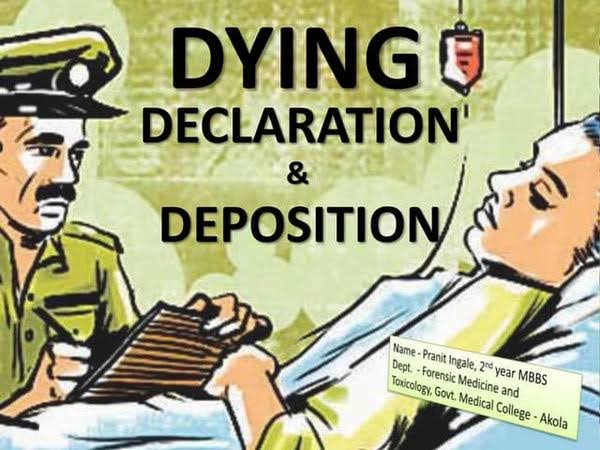N.K. Aggarwal, J.@mdashThese are two revision petitions, involving common questions of facts and law and are, therefore, decided by this common order.
2. The tenant, Janak Raj, filed an application before the rent Controller, Pathankot, seeking a direction to the landlord to repair the roof of the shop. This direction was sought u/s 12 of the East Punjab Urban Rent Restriction Act, 1949 (for short, "the Act"). The petitioner was tenant in the shop in question on a monthly rent of Rs. 25/-. It was explained by the petitioner-tenant, in his application, that, due to heavy and unprecedented rains in September 1988, the wooden beam of the shop fell down and the "ballas" resulted in the collapse of a part of the roof of the shop. He was, however, still carrying on his business in the shop as part of the roof was intact. The damaged portion of the roof was said to be repairable. The tenant asked the landlord to get roof repaired but the landlord did not do anything and only gave assurances. The Rent Controller, however, dismissed the application filed by the tenant. However, in appeal, the appellate authority held that there was a need of repair of the shop. He, therefore, allowed the appeal.
3. There was another application, filed by the landlord, before the Rent Controller, seeking eviction of the tenant from the shop on the ground of non-payment of rent from April 1, 1988 and also on the ground that the shop had become unfit and unsafe for human habitation. The landlord, in his petition, claimed that 2/3rd portion of the roof alongwith beams and "ballas" had fallen and, therefore, the walls of the shop had become unsafe.
4. The following issues were framed by the Rent Controller :-
"1. Whether the tenant is entitled to an order for repair of the roof of tenancy premises u/s 12 of the Rent Restriction Act, 1949. If so to what extent? OPA
2. Whether the application is not maintainable on account of pendency of petition u/s 13 of the Act? OPR
3. Relief."
5. The parties led evidence and examined witnesses in both the proceedings. The landlord examined himself and one J.C. Mahajan, a retired Executive Engineer, PWD in both the proceedings. The tenant also examined himself and one B.D. Gupta, a retired S.D.O., MES, in both the proceedings: In the eviction proceedings, a Local Commissioner, Shri Rajiv Joshi, Advocate, was examined as the Court witness.
6. The only controversy which survived for decision before the Rent Controller in both the proceedings related to the nature and extent of damage caused to the roof of the shop by heavy rains. The plea put-forward by the landlord was that the shop in question had been constructed about 40 years earlier, soon after the partition of the country. He claimed that walls of the shop were raised with mud plaster and due to the collapse of the roof, the walls had developed cracks. The floor was also in a damaged condition. J.C. Mahajan, who appeared on behalf of the landlord, explained that half portion of the roof, in the front part of the shop, had collapsed. The fallen portion of the roof had been covered by the tenant by a tarpaulin. He further stated that the upper portion of the wall, over the door, might fall at any time because of the collapse of the roof.
7. The tenant stated, in his evidence, that one beam of the roof fell down due to rains but he is still running his Karyana business in the shop. B.D. Gupta, retired S.D.O. MES, appeared in evidence on behalf of the tenant and stated that the walls of the shop were of mud mortar but the outer side of the wall had cement plaster. The front portion of the roof had collapsed. One wooden beam (7'' 7" x 12'') and 25 battons with wooden planks had fallen. The area of the collapsed portion was 12'' x 10'' x 6". Shri Gupta opined that the roof could be repaired and the shop was safe for human habitation.
8. Learned counsel for the tenant has argued that the walls of the shop are durable and intact. It was a case of partial falling of the roof. The landlord did not get it repaired with a malafide intention of seeking eviction of the tenant from the shop. There was no pleading in the petition filed by the landlord or in the report prepared by J.C. Mahajan that the walls of the shop had developed cracks. The evidence of B.D. Gupta is said to be clear on the point that the roof had partially fallen and the business was being done by the tenant in the shop.
9. Learned counsel for the landlord, on the other hand, argued that the landlord had filed eviction petition before the Rent Controller on October 4, 1988 whereas the tenant filed his application, seeking a direction to the landlord for carrying out repairs in the shop, on December 21, 1988. .It is argued that the tenant''s application was simply a counter case with a malafide intention to avoid eviction and put pressure on the landlord in his eviction petition. One of the grounds taken by the landlord in his petition was that the shop has become unsafe and unfit for human habitation. In that view of the matter, the tenant''s petition was wholly without substance. The Local Commissioner, appointed by the court, had reported that 2/3rd portion of the roof had fallen and roof was not repairable. Since a major portion of the roof had fallen, it was to be reconstructed and simple repairs could not protect the shop.
10. Learned counsel for the tenant has placed reliance on a decision of this Court in Dr. Jagmohan Singh v. Smt. Bimla Devi (1975) 77 P.L.R. 643, in support of his plea that replacement of roof of a building would come within the ambit of Section 12 of the Act. That was a case where the tenant had filed an application u/s 12 of the Act against the landlord with the plea that the roof of one of the rooms had cracked in consequence of rains and the same may, therefore, be replaced by the land-lord. The Rent Controller issued a direction in terms of Section 12 of the Act. The appellate authority affirmed the decision of the Rent Controller as to the replacement of the roof. The High Court noticed that the replacement was necessary and in that view of the matter rejected the plea of the landlord that replacement of the roof was not in the nature of "necessary repairs"
11. In Labh Chand Om Parkash v. Krishan Lal and Ors. 1990 95 P.L.R. 87, this Court had again an occasion to examine a case of eviction on the ground that the building had become unfit and unsafe for human habitation. It was noticed that the fall of the roof of ''Khans'' did not make out a case that the entire building had become unfit and unsafe for human habitation. The condition of the entire building was found to be good. The landlord, by his own act and conduct, did not repair the roof of the ''Khans'' and permitted a part of the ''Kacha'' roof of the room to fall. It was held that the application for ejectment did not appear to be bonafide. Lack of bonafides was again obvious in view of a number of false pleas, particularly with respect to the rate of rent and nuisance etc. taken by the landlord consciously.
12. In
13. In
14. The Supreme Court in
15. In
16. It is clear from the view taken by this Court as well as the Supreme Court in the cases of damaged property that the nature and extent of damage were, significant factors. In the case in hand, two experts, have appeared in evidence, one on behalf of the landlord and the other for the tenant. J.C. Mahajan is a retired Executive Engineer of PWD, who appeared for the landlord. B.D. Gupta, appearing for the tenant, is a retired S.D.O. MES. There is no dispute to the extent that a major portion of the roof of the shop has fallen down. The walls of the shop are made of mud plaster. The remaining part of the roof, resting on the mud plaster, cannot be said to be safe and may give way any time. It is not a case of repair at all. There is a passage on one side of the shop and there is no support to the wall from that side. From the evidence, it appears that mud is falling down from the walls and cracks have appeared in the walls. The landlord has stated that the tenant has put up supporting poles to prevent the collapse of the remaining part of the roof. The Local Commissioner has also affirmed that 2/3rd portion of the roof has fallen and the walls showed big cracks. In such a situation, it cannot be said to be a case of only repairs. The view taken by the learned appellate authority is found to be unsustainable.
17. In the result, both the revision petitions are allowed. The orders of the Appellate Authority are quashed and the orders of the Rent Controller, in both the proceedings, are up-held. The tenant is ordered to be evicted from the shop in question. A period of three months from today is granted to the tenant to hand over the vacant possession of the shop to the landlord.
18. Parties shall bear their own costs in both the petitions.

